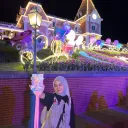Not just Boracay...
A Guide to Exploring Spain’s Islamic Legacy: The Landmarks, Stories, and Cities You Can’t Miss
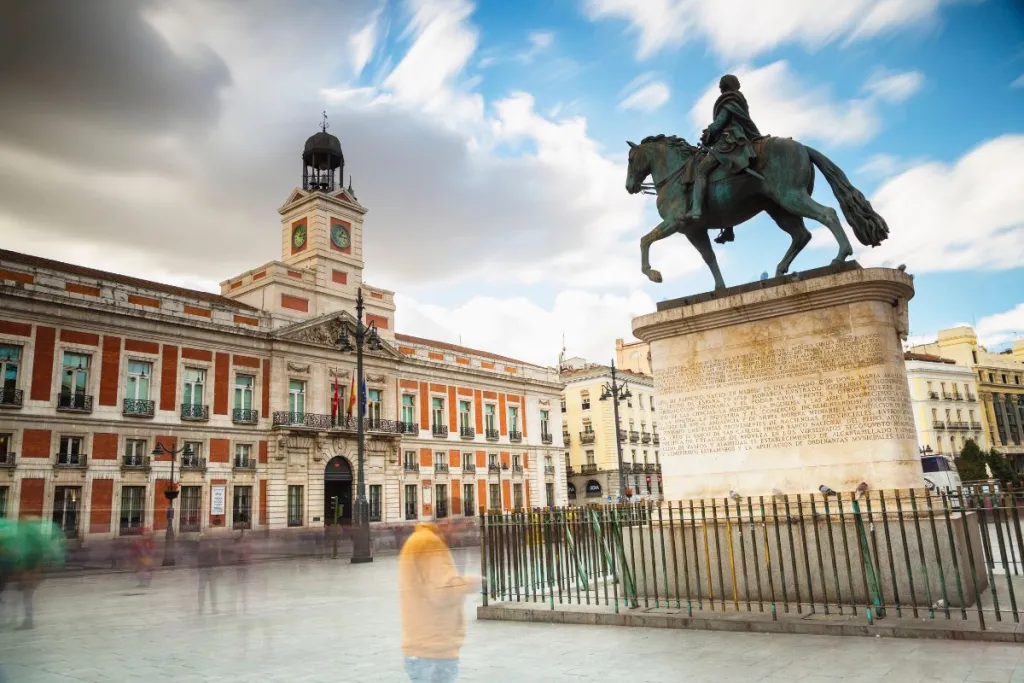
At first, when I received the invitation from the Spain Tourism Board, I honestly thought to myself, "Why Spain? Does it even have anything to do with Islamic culture?" As someone who covers Muslim travel and historical sites, I wasn’t sure what to expect. But trust me, keep reading this whole piece and let me convince you.
Why Spain? Because Spain has so much to offer—not just in terms of beauty and architecture, but in stories that enriched my belief in Islam and made me proud to be born a Muslim. As a Muslim traveller with a deep love for history and cultural heritage, I found myself utterly enchanted. It’s hard to put into words what it feels like to walk through streets where the call to prayer once echoed, where scholars and artists changed the course of civilisation, and where layers of history are etched into every stone. As I write this article, I’m already missing every bit of Spain so much that I want to book another flight to Córdoba right away—hiks!
From the grand palaces to quiet corners, Spain’s Islamic legacy is not just visible—it’s palpable. Here’s a guide to the landmarks, stories, and cities you simply can’t miss if you want to trace the enduring footprints of Al-Andalus.
Toledo: The city of three cultures
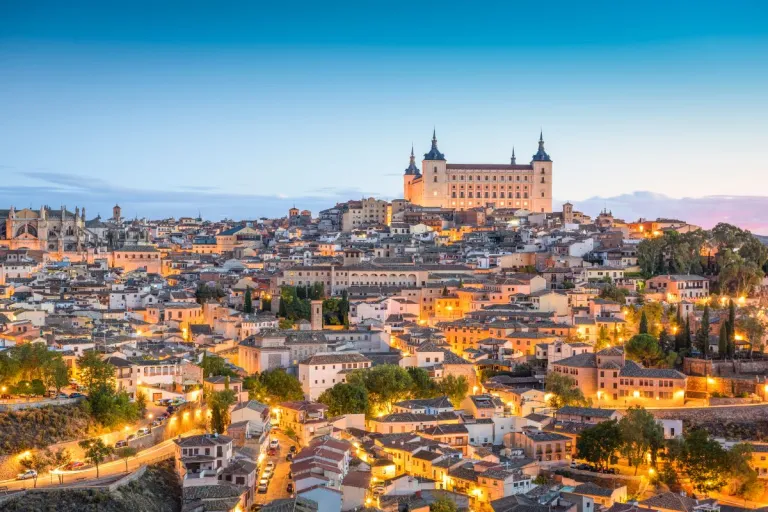
Image credit: SeanPavonePhoto | Canva Pro
My adventure in Spain began in the ancient city of Toledo, perched dramatically on a hill and wrapped in layers of Islamic, Jewish, and Christian history. Spending the whole day here gave me time to truly absorb its quiet grandeur.
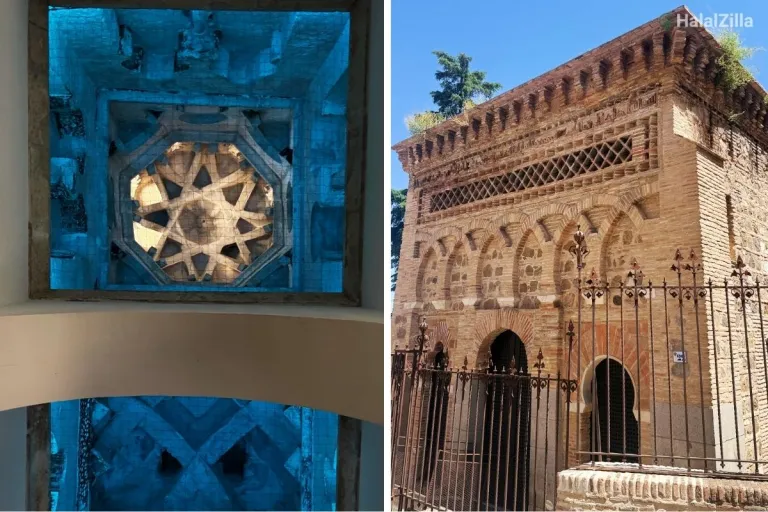
My first stop was the Cristo de la Luz Mosque, a small yet beautiful 10th-century mosque that still holds its original mihrab. From there, I made my way to the Toledo Cathedral, where I visited the site of the old mosque it was built upon—a reminder of the city’s deep Islamic roots.
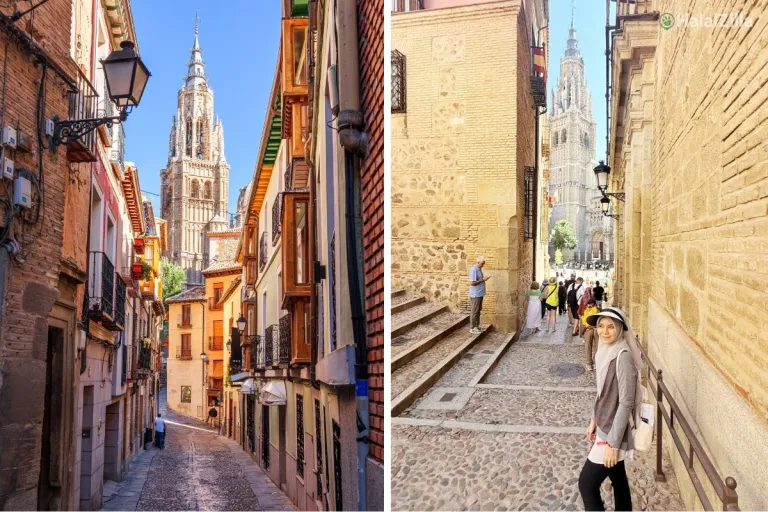
Image credit (left): Sean Pavone | Canva Pro
I wandered through Toledo’s Old Town, letting the cobbled streets and medieval walls guide my steps. The atmosphere here is serene, even contemplative, especially as I explored the Jewish Quarter and visited the El Tránsito Synagogue.
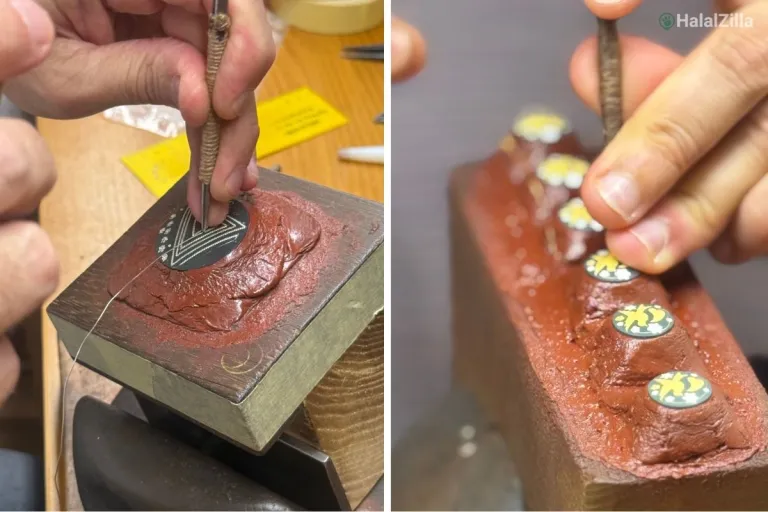
Our last stop before lunch was Damasquinado Hecho a Mano, where we witnessed generations of artisans practising the delicate craft of damascene metalwork—a traditional technique of inlaying gold or silver into steel, a skill passed down through centuries and still preserved today. It was fascinating to watch the detailed process unfold by hand, a true testament to Toledo’s enduring artistic heritage.
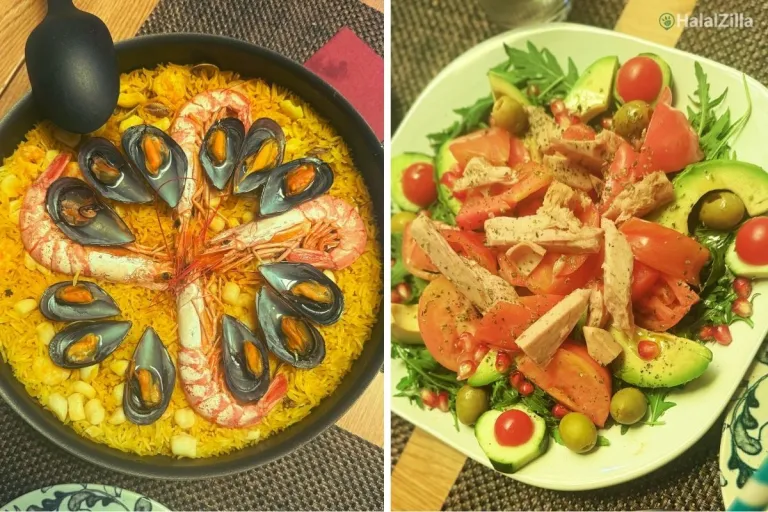
For lunch, I found a gem called Arabian Touch, where I enjoyed a halal fusion of Spanish flair and Muslim-friendly options. It was the perfect pause in a city that rewards slow discovery. As the sun began to set, we packed up and made our way to Córdoba, ready to dive into the next chapter of Spain’s Islamic legacy.
Córdoba: The beating heart of Al-Andalus
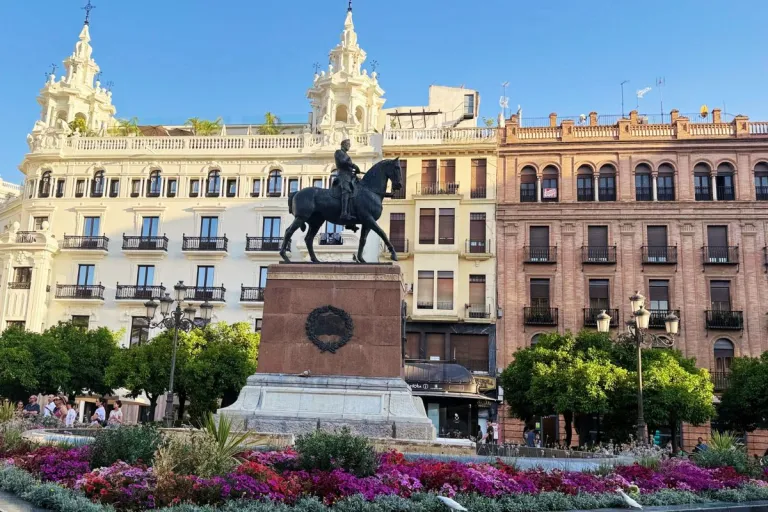
My journey in Córdoba begins in the former capital of the Umayyad Caliphate. Stepping into this city felt like opening a storybook where every page whispered tales of faith, art, and knowledge.
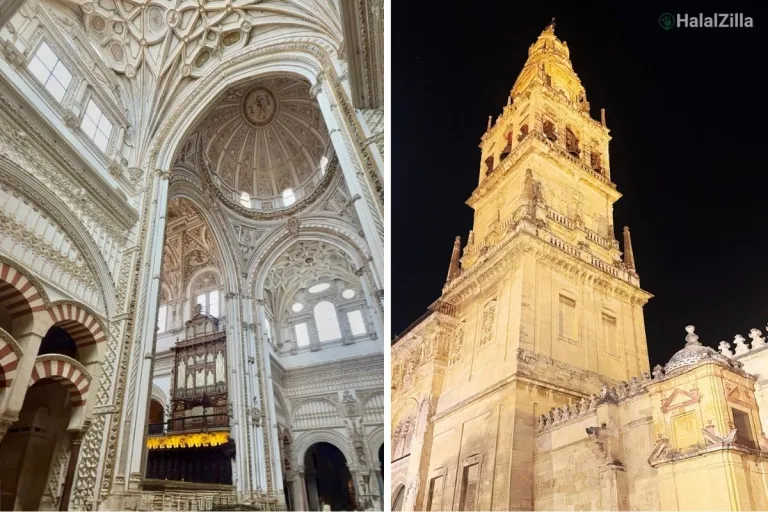
The first stop, of course, was the Mezquita-Catedral de Córdoba. I had seen countless pictures, but nothing prepared me for the beauty of the red-and-white arches stretching endlessly inside.
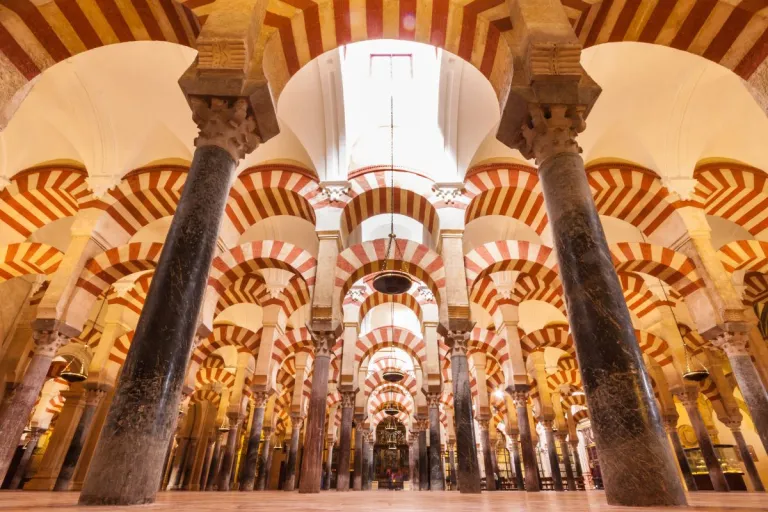
Image credit: Kasto | Canva Pro
As a Muslim, there was a bittersweet feeling standing under the intricate mihrab—a masterpiece built to reflect the unity of the Islamic world—now housed inside a Christian cathedral. But even amidst the transformation, the soul of Islamic art lingers.
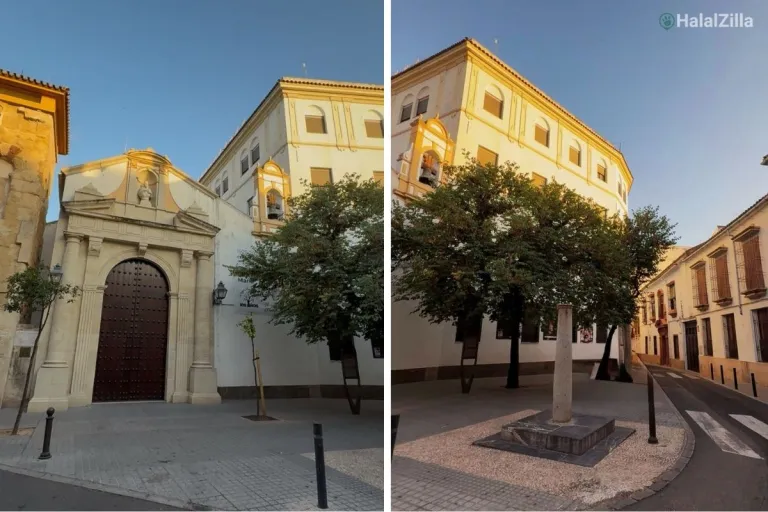
Later, I wandered the cobbled streets of the old medina, where every turn seemed to reveal a hidden gem. The modern Mosque of the Andalusians was a peaceful retreat, and the Minaret of San Juan de los Caballeros echoed the skyline of a long-lost Islamic era.
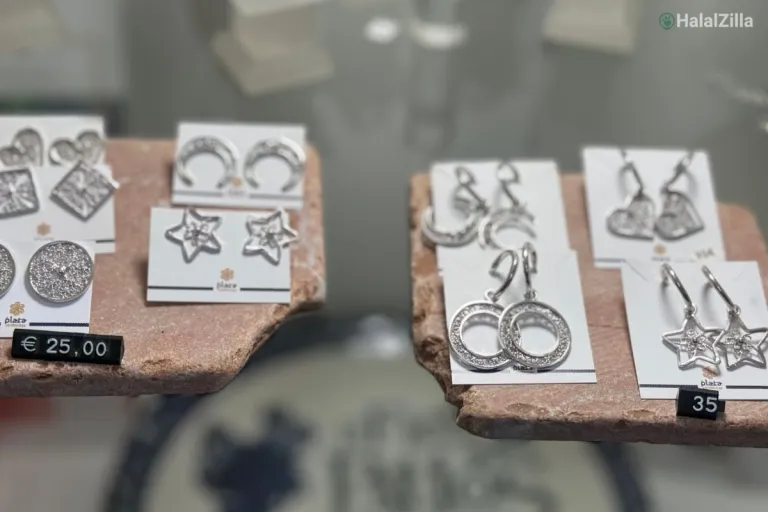
I stopped by the Casa Árabe, a cultural centre that offers exhibitions and insights into Arab and Islamic influence in Spain.
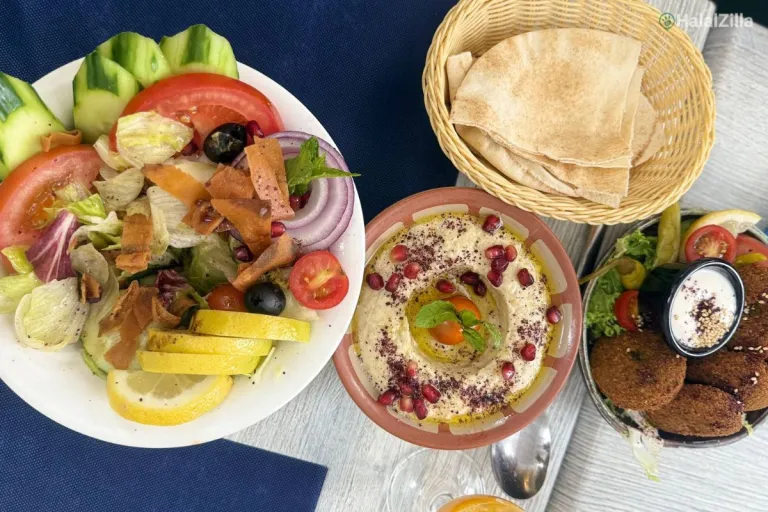
For lunch, I sat down at Damasco Restaurante, a halal Syrian restaurant that served one of the best hummus platters I’ve had in Europe. Muslim-friendly dining is not hard to find in Córdoba, and the warmth of the local community adds so much to the experience.
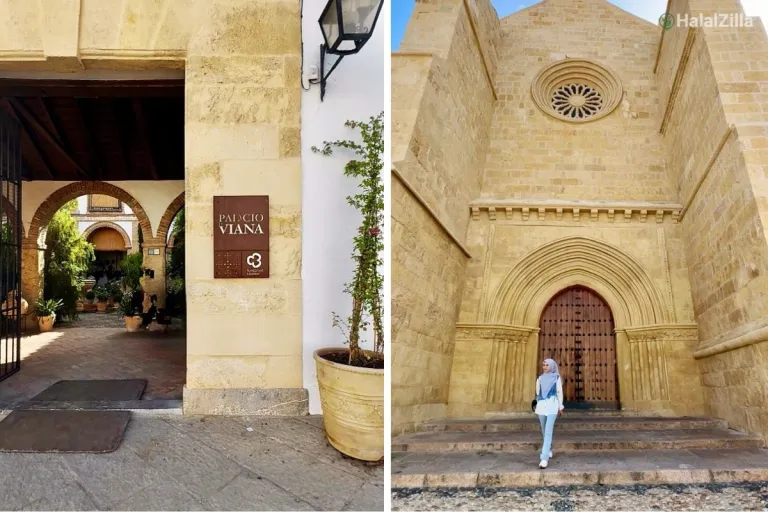
On my second day, I explored the Axerquía Quarter. This area blends medieval Islamic roots with Christian overlays. The Palacio de Viana and its blooming patios were a highlight—so much greenery and flowing water, it felt like a vision straight out of Jannah.
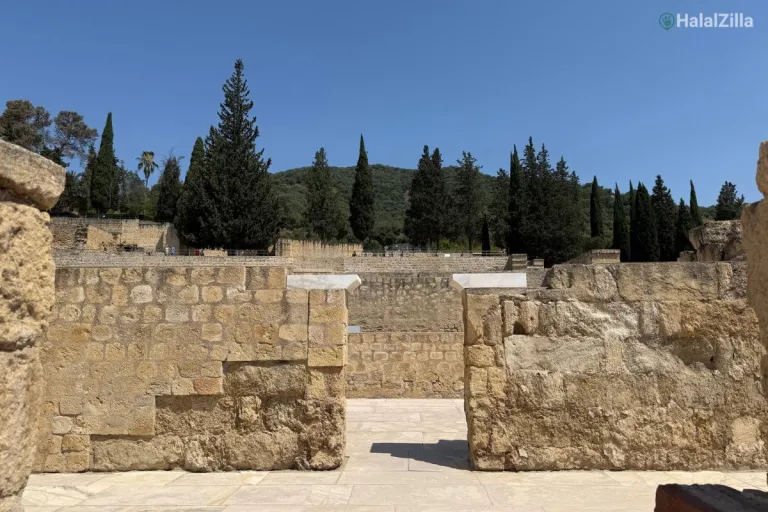
No visit to Córdoba would be complete without venturing to Madinat al-Zahra. Just a short drive outside the city, this archaeological site was once a shining city built by Abd al-Rahman III. Though now in ruins, you can still sense the ambition and grandeur that defined the Umayyad Caliphate. As I stood in the remnants of the throne hall, I closed my eyes and imagined the caliph welcoming diplomats from across the world.
Read my full story in Cordoba here
Zaragoza: An unexpected treasure
Part I: Zaragoza - Aragon - Pyrenees Tour
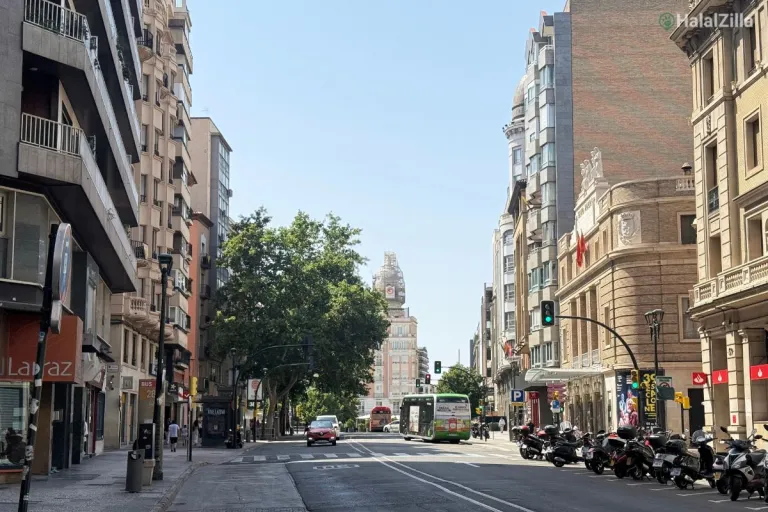
After Córdoba, our journey took us to Zaragoza (read: Saragosa)—a city I initially underestimated. Honestly, I thought it was just a small, quiet town with not much going on. But wow, was I wrong. This place had so much—like SO MUCH—to offer. The city is stunning: clean, vibrant, and filled with breathtaking architecture, monuments, and art. Every corner felt like a hidden masterpiece. Wallahi, I was genuinely blown away.
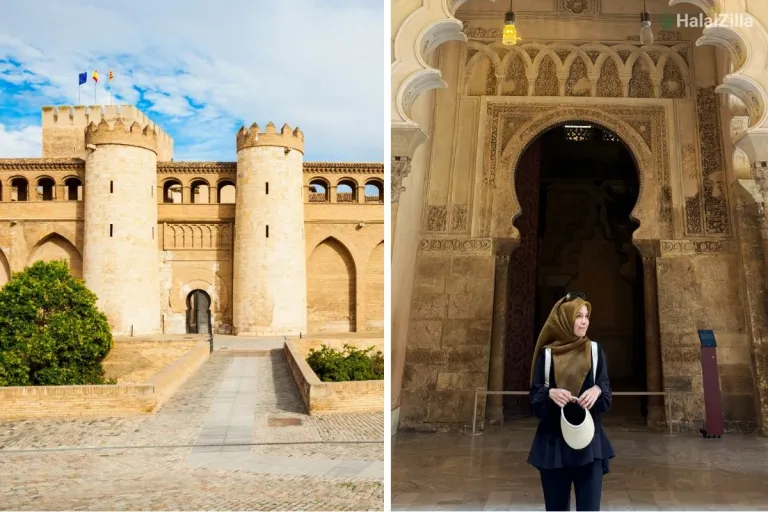
Despite the crazy heatwave weather that soared up to 40°C, we extended our journey to explore even more of Zaragoza’s magical landmarks. I spent a few nights here, which gave me time to soak it all in. The highlight, of course, was the Aljafería Palace, a fortified Islamic wonder that once served as a Muslim residence before transforming into a Christian court.
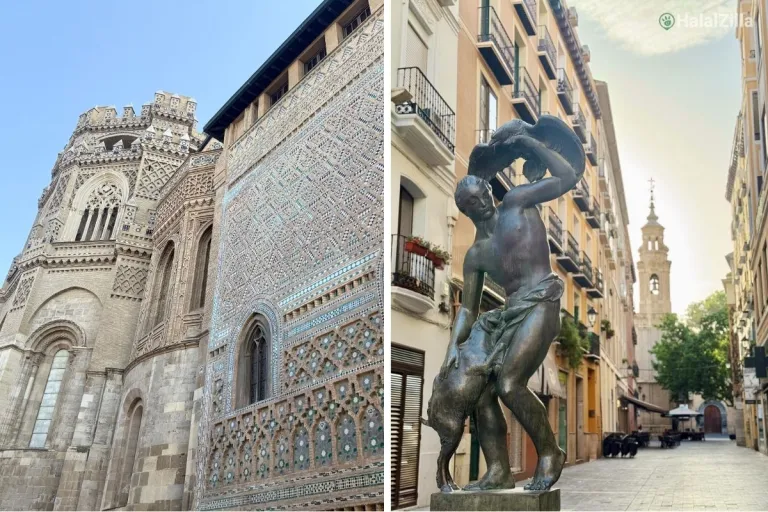
Then there was San Pablo Church, which is rich in Mudéjar details—a style that emerged from the hands of Muslim craftsmen working under Christian rule.
Fun fact: this architectural blend stands as a symbol of cultural coexistence that continued even after the fall of Islamic rule. Finally, La Seo Cathedral offered another dazzling display of layered history, reflecting a continued dialogue between Islamic and Christian artistry across centuries. I also stopped by the local traditional shops for a brief second.
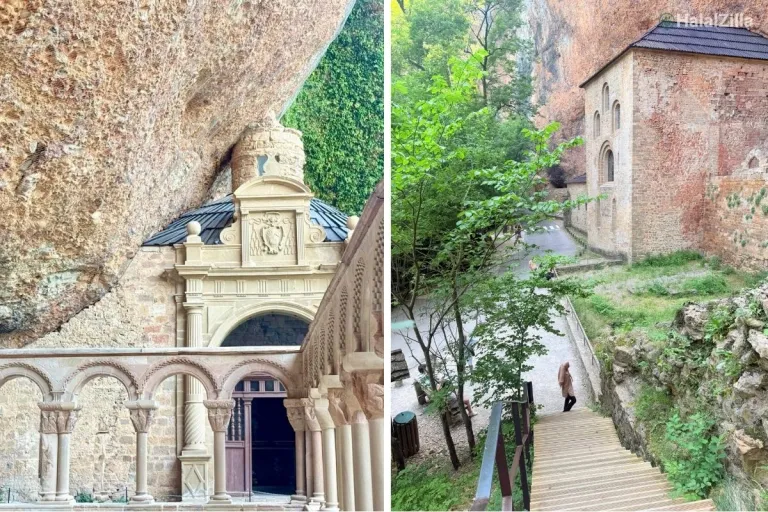
Later the next day, I joined a tour into the Pyrenees region, where the raw beauty of Spain's mountainous landscapes truly came to life. First, we visited San Juan de la Peña, a stunning monastery tucked beneath a rocky cliffside. Little did I know, this serene site was once the royal pantheon where the kings of Aragon were buried. It's more than a religious site—it's a peaceful retreat that nature lovers and history buffs alike will adore, offering both eyegasmic views and a rich legacy.
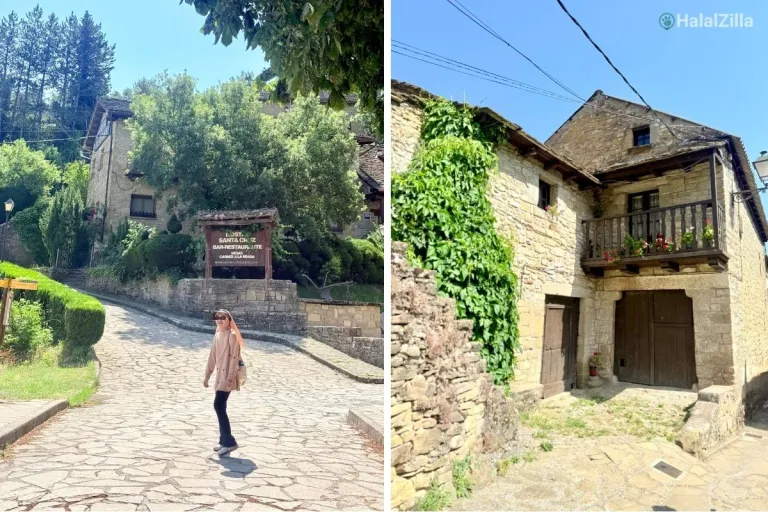
Just nearby was San Juan de la Serós, a charming village whose Romanesque architecture is a visual treat. The peacefulness here is almost meditative, surrounded by lush greenery and traditional stone houses.
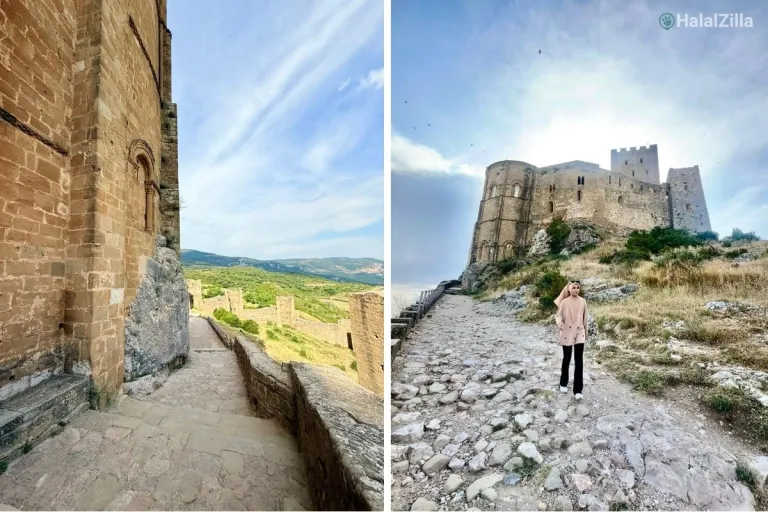
My favourite mini hike was up to Loarre Castle, and I must say—it stole my heart. Perched dramatically against a mountainous backdrop, this 11th-century fortress is one of the best-preserved Romanesque castles in Europe. The hike was gentle and enjoyable, and once at the top, the scenery was absolutely divine: endless rolling hills, stone walls kissed by sunlight, and the fresh mountain breeze. It felt like a scene from a fairytale—or maybe an Andalusi warrior’s dreamscape. Also, there’s this window high up in one of the castle rooms that offers a breathtaking view of the valley below, almost as if you're seeing it through the king’s lens, who once ruled from here. SubhanAllah, moments like these remind me how travel can connect us with both history and the present all at once.
Part II: Zaragoza - Calatayud - Tobed - Muel
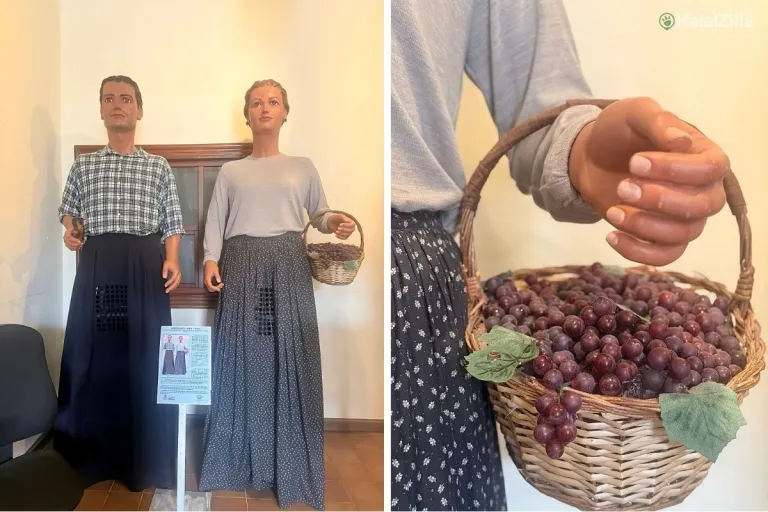
The next day was packed with Mudéjar village visits, starting with Borja, a small village quietly holding great Islamic secrets. Borja is known for its wine production, as the region yields a significant amount of grapes annually, thanks to its fertile land. During harvest season, you can even see vendimiadoras, the dedicated grape-pickers who handpick the harvest. While wine isn't something Muslims consume, it’s fascinating to see how the land Allah created can be used in many ways, and how Muslims can appreciate the agricultural legacy without indulging in what is forbidden.

Image credit: mmeee | Canva Pro
As I wandered through Borja’s stone alleys, I spotted clear Andalusi influences in the architecture. The standout was a stunning stone arch, a perfect example of Mudéjar art—a beautiful blend of Islamic and Christian design that can be seen throughout Aragón. It felt like uncovering hidden traces of our heritage in the most unexpected places.
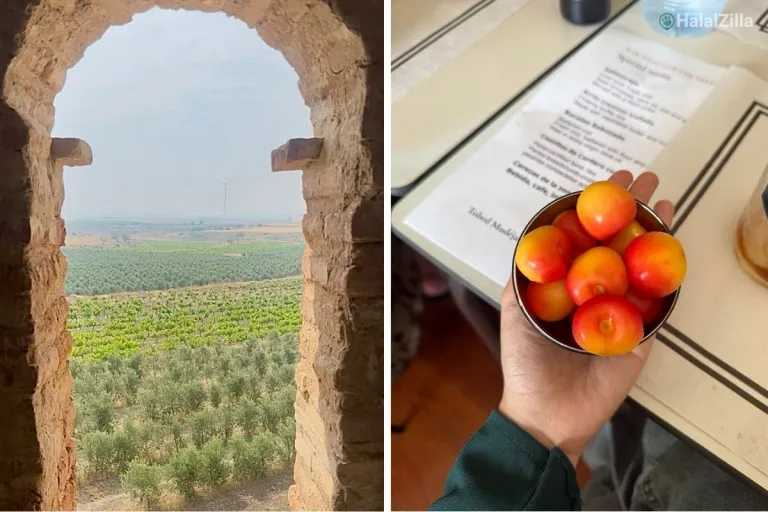
Our next stop was Casa de la Estanca, a tranquil lake dating back to the 14th century, surrounded by olive trees, grapevines, cherry trees, and golden fields. The views here were nothing short of breathtaking—calming, serene, and deeply spiritual. I was immediately reminded of this beautiful verse from the Qur’an:
Surah Al-Ankabut (29:20):
“Travel through the land and observe how He began creation.”
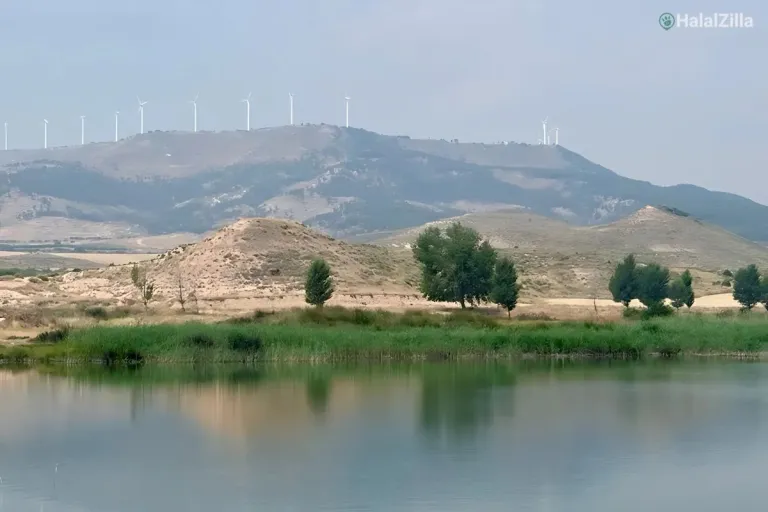
SubhanAllah, there’s something deeply comforting about seeing the very trees and crops mentioned in the Qur’an right before your eyes. It brings a profound connection between nature and divine revelation.
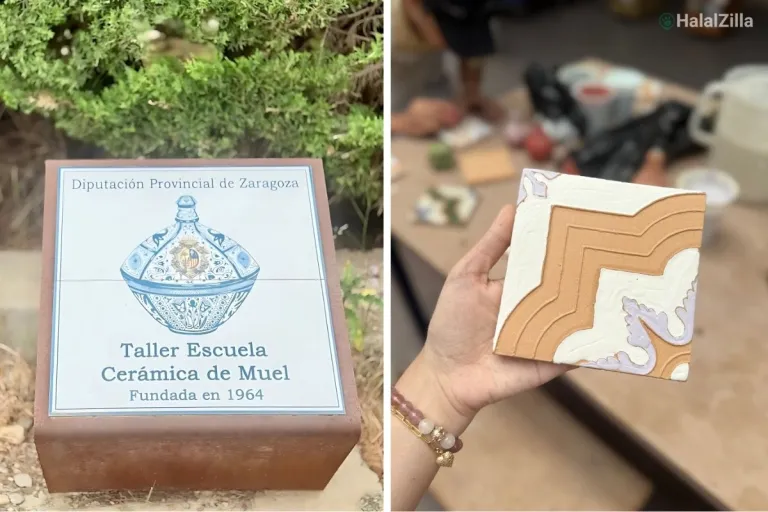
From there, we made our way to Muel, where I had the chance to learn traditional ceramics at Muel Cerámica Viva—a charming little workshop keeping alive centuries-old ceramic artistry deeply influenced by Islamic patterns and techniques. It was my first time working with clay, and let me tell you—my inner child was screaming with joy, hihiks! There’s something incredibly therapeutic about moulding earth into art, knowing that Muslim potters once did the same during the golden age of Al-Andalus.
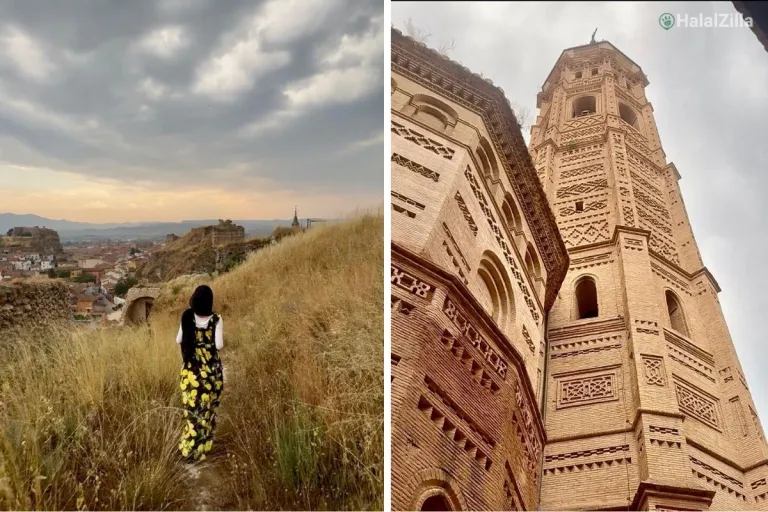
Next, while we were in the zone, we continued our journey to Calatayud, a city with powerful Islamic roots. Did you know? It was founded by Muslims in the 8th century and named Qal'at Ayyub, meaning "the fortress of Ayyub." Walking through its streets, we came across tall buildings adorned with some of the most beautifully preserved Mudéjar art I’d seen so far. Once again, my eyes were blessed—subhanAllah! The harmony between Islamic and Christian aesthetics in this city speaks volumes about a past filled with cultural dialogue and coexistence. It was one of those days that filled my heart completely.
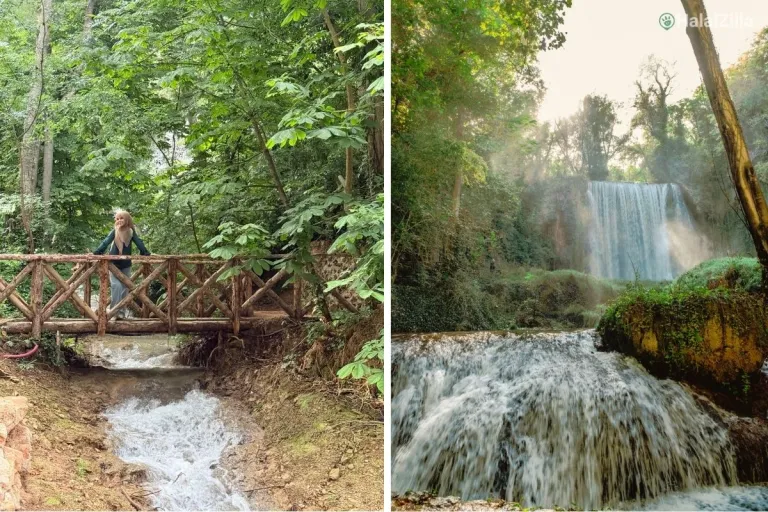
Image credit (right): Juan Dana | Canva Pro
The next day, we kicked off our morning with a stroll through the breathtaking natural park at Monasterio de Piedra in Nuévalos. I was not ready for what I saw: gigantic waterfalls cascading through lush greenery, the sound of rushing water echoing like nature's own dhikr. It felt surreal to the eyes—so beautiful, mashaAllah, I almost bawled my eyes out. The weather, too, was finally kind to us: a cosy 20°C morning, a sweet reward after surviving the previous heatwave of 40–45°C in Toledo, Córdoba, and Zaragoza.
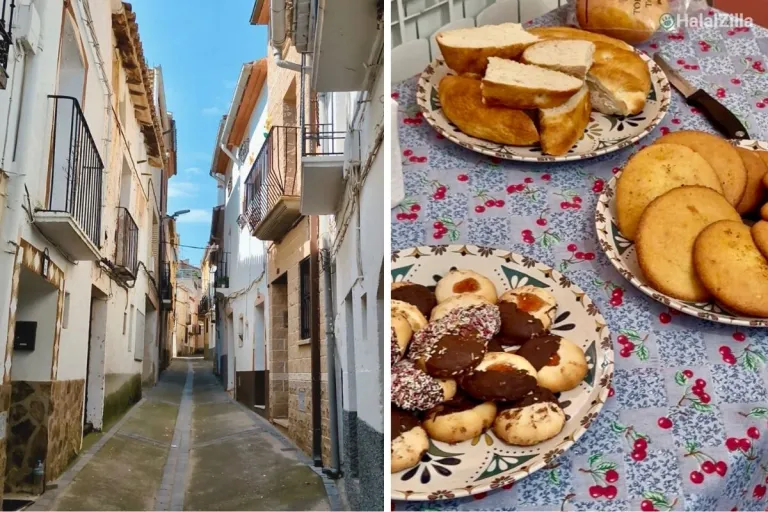
Image credit (left): @entre_escombros | Instagram
From there, we travelled to Tobed, a hidden gem filled with more Mudéjar beauty and small-town charm. One of the most heartwarming things I witnessed was how locals still carry on centuries-old traditions: they bring their homemade dough to the old communal oven to bake fresh bread, cookies, and more. I was lucky enough to try their homemade cookies dipped in café con leche (coffee with milk)—a perfect combo for the sunny afternoon!
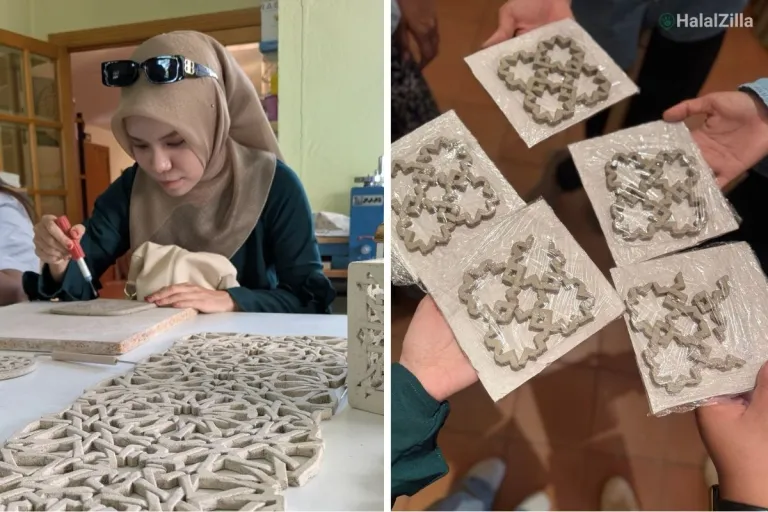
At the Center of Mudéjar Art and Architecture, I had the chance to try carving traditional Mudéjar patterns using clay. Though my final piece wasn’t exactly museum-worthy (hehe), I genuinely loved the experience. There's something therapeutic about working with your hands—moulding shapes, tracing curves—like a little part of my soul was healing with every stroke.
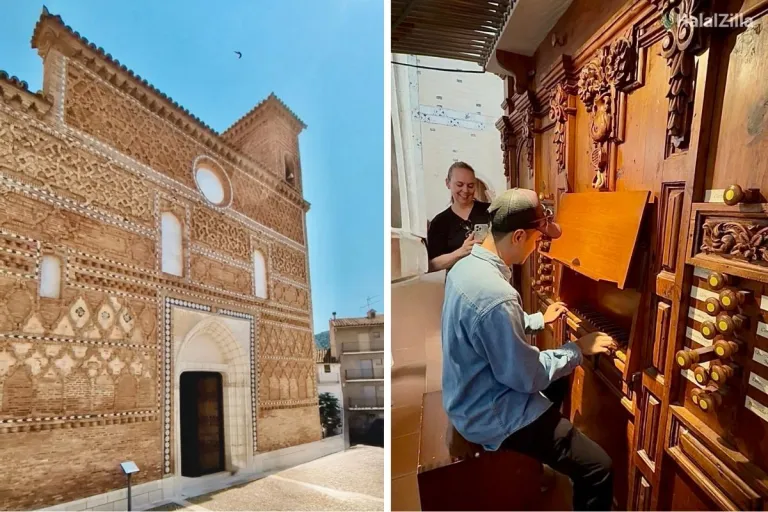
Our Mudéjar tour in Tobed ended at the Iglesia de Santa María, a beautiful church whose architecture is both grand and quietly spiritual.
Fun fact: I just learned that most churches in Spain have a piano or organ, and the sound of it playing inside those old stone walls? It’s surprisingly calming.
Muslim-friendly travel tips
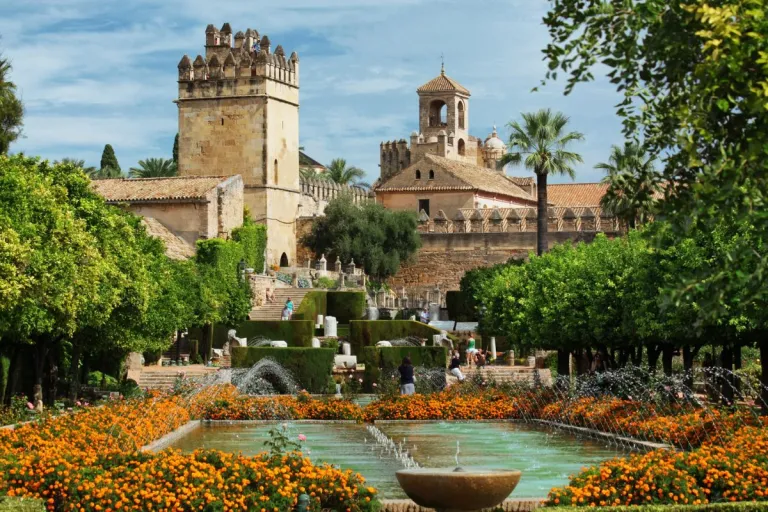
Image credit: Pixels4Free | Canva Pro
Travelling through Spain as a Muslim is not only doable—it’s enriching. Halal food is available in most major cities, especially at Middle Eastern and North African restaurants. Apps like Zabihah or HappyCow helped me track down options when I was unsure.
Prayer spaces are not always visible, but mosques do exist in cities like Córdoba, Granada, and Madrid. When in doubt, you can find quiet corners in parks during prayer time.
Modest clothing is respected in Spain, not really a problem for me since, as a Muslim, I always have my hijab on. But just a warm reminder to my fellow future travellers: wearing modest clothing is highly encouraged, and please bring a scarf just in case—it can be especially handy when entering churches or other sacred sites.
Also read: A Muslim Traveller’s Guide to Spain: How to Plan The Perfect Halal-Friendly Journey
Final thought: A legacy that lives on
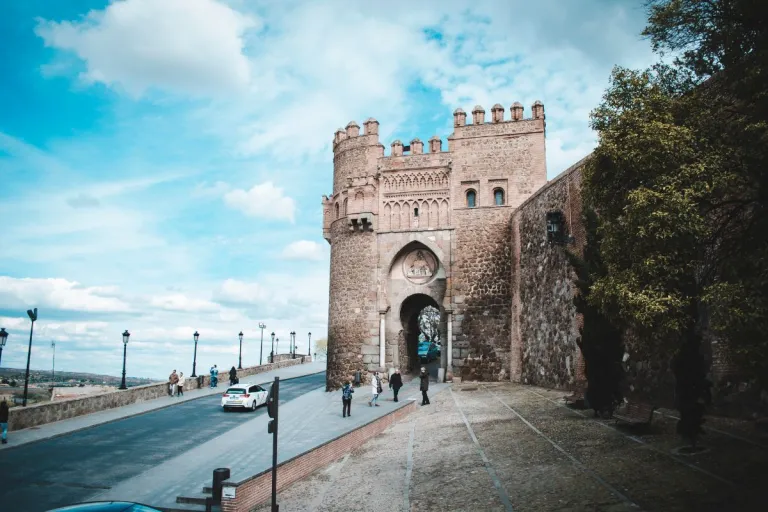
Image credit: Nicolas Postiglioni | Canva Pro
Are you convinced now that Spain has so much to offer for Muslim travellers? Because I sure am. This journey gave me a renewed sense of gratitude and admiration for the resilience of Islamic heritage.
Back home, I live in a neighbourhood where I hear the adzan five times a day. I never have to check my MuslimPro app just to know when to pray. Mosques and musollas are within every 5 to 10 kilometres. But in Spain, things were different. I had to be more intentional. I found myself praying in parks, quiet corners, sometimes even in cafés. And subhanAllah, I felt closer to Allah through that. It was like I was actively seeking out those moments of connection, and I appreciated them even more.
Another thing that struck me was just how brilliant and powerful Muslim scholars and leaders once were in this land. They weren’t just rulers; they were thinkers, builders, and defenders of Islam. Even after the Christian conquest, Muslim artists were still sought out to build and decorate, giving rise to the blend of Al-Andalusian masterpieces and Mudéjar art we admire today.
Spain’s Islamic past isn’t locked in the pages of history. It lives on in its cities, streets, and people. For Muslim travellers, it offers a chance to connect deeply with a lost yet lingering chapter of our heritage.
This journey left me humbled, inspired, and proud. From the grandeur of the Alhambra to the peaceful patios of Córdoba, every moment felt like walking through living history.
If you’ve ever dreamed of exploring the lands of Al-Andalus, let this be your sign. Go. Walk where the scholars once walked. Pray where the faithful once prayed. Let the legacy of Islamic Spain awaken something timeless within you.
______________________________________________________________________________________________________
Special thanks to the Spain Tourism Board, Empresa Pública de Promoción del Turismo y la Artesanía de Castilla-La Mancha, Turismo Zaragoza, Fundación Las Fuentes and Territorio Mudejar.
Published at
About Author
Aimi Zulkiflee
Subscribe our Newsletter
Get our weekly tips and travel news!
Recommended Articles
10 Best Halal-Friendly Destinations in The Philippines for Muslim Travellers 10 Best Halal Restaurants in Pattaya Serving Authentic Thai Cuisine Let's try Halal Authentic Thai Cuisine in Pattaya
10 Best Places for Muslim Travellers to See Tulip Festivals in 2025 Fun Fact: Tulips didn’t actually come from the Netherlands but Türkiye!
10 Halal Anime Food Guide for Muslim Travellers in Japan Muslim-friendly versions of popular anime dishes across Japan!
Top 10 Popular Muslim-Friendly Destinations to Visit in 2025 Our schedules are packed, buddies!
Latest Articles
Top 8 Muslim-Friendly Islands in Southeast Asia Ranked by National Geographic Choose your best island getaway now!
Travel Guide to Japan for Muslim Traveler: List of Items You Cannot Bring into Japan Don’t Get in Trouble Because of Your Luggage!
What Travellers Must Know About Typhoons Kalmaegi & Fung-Wong in the Philippines and Vietnam Our condolences go to the victims affected by typhoon.
Best Hotels Near Universal Studios Japan (USJ) for Muslim Travelers The best solution is to stay at a strategically located hotel near USJ
Muslim-Friendly Guide to Western Australia: Halal Food, Spiritual Comfort, and Adventure a guide to the best Halal culinary spots and thrilling adventures you must try

